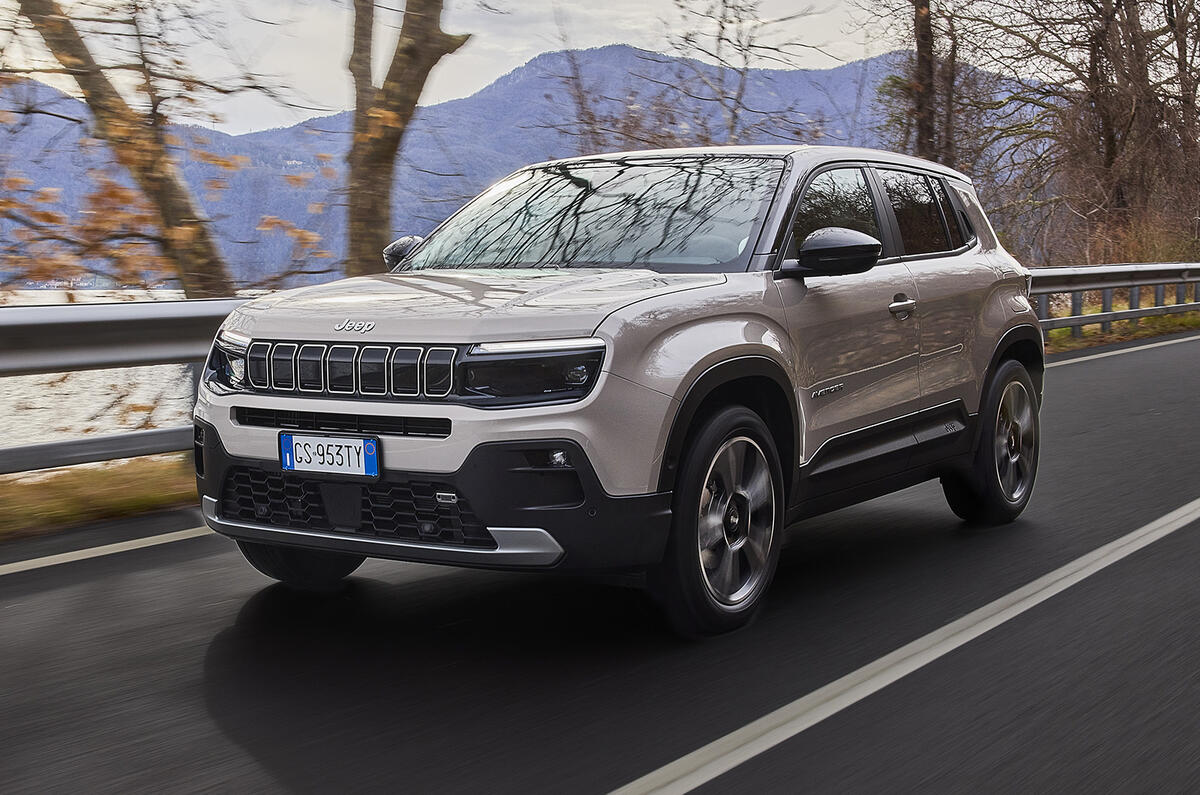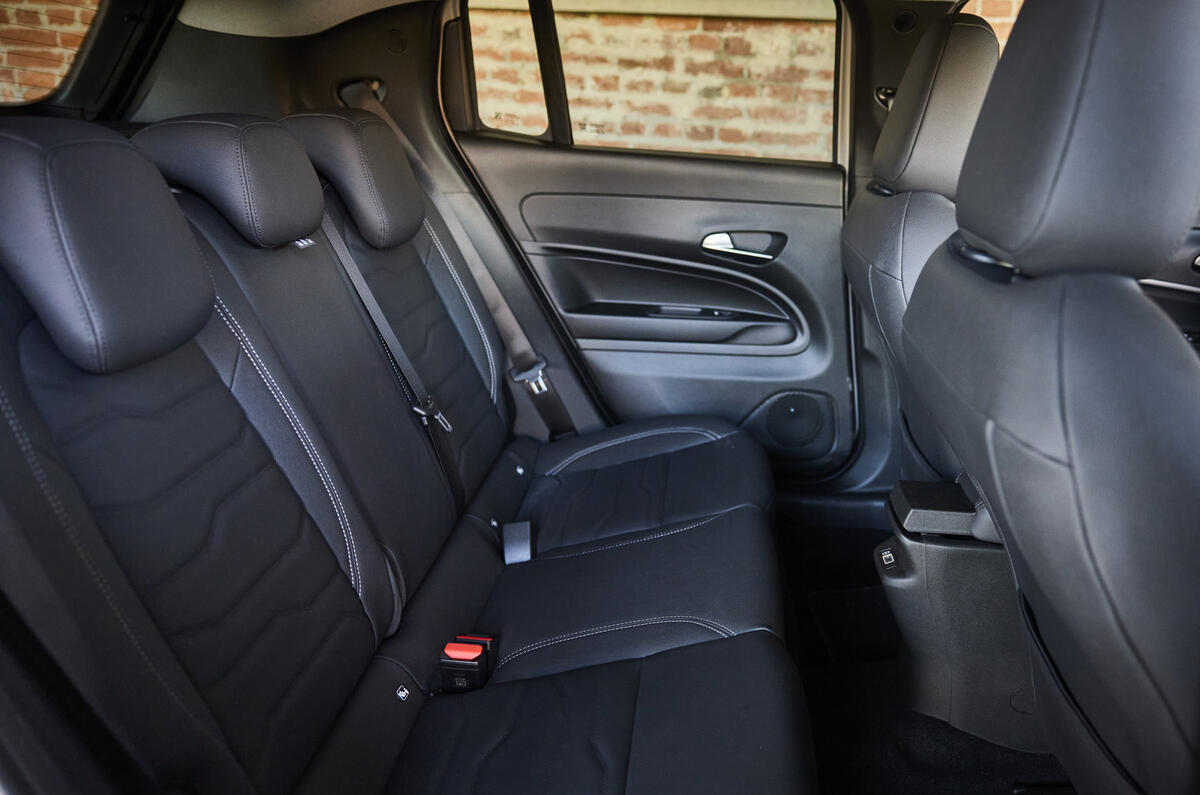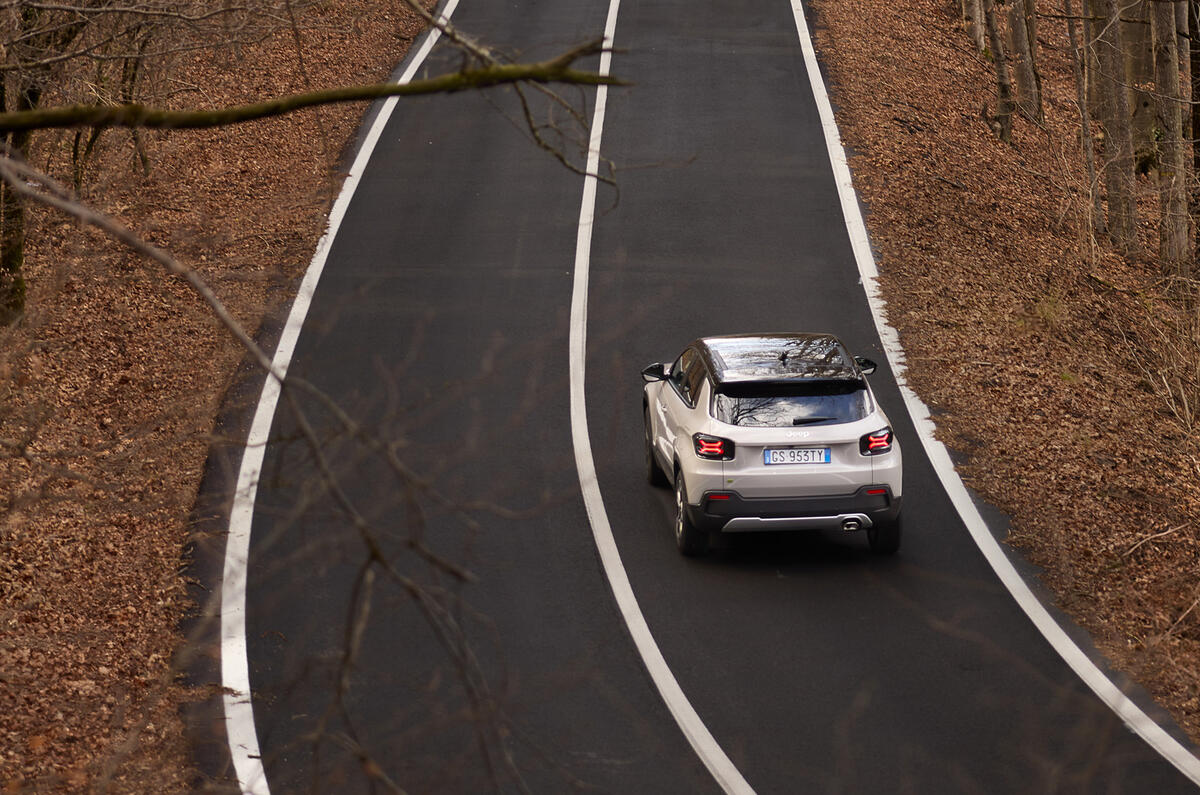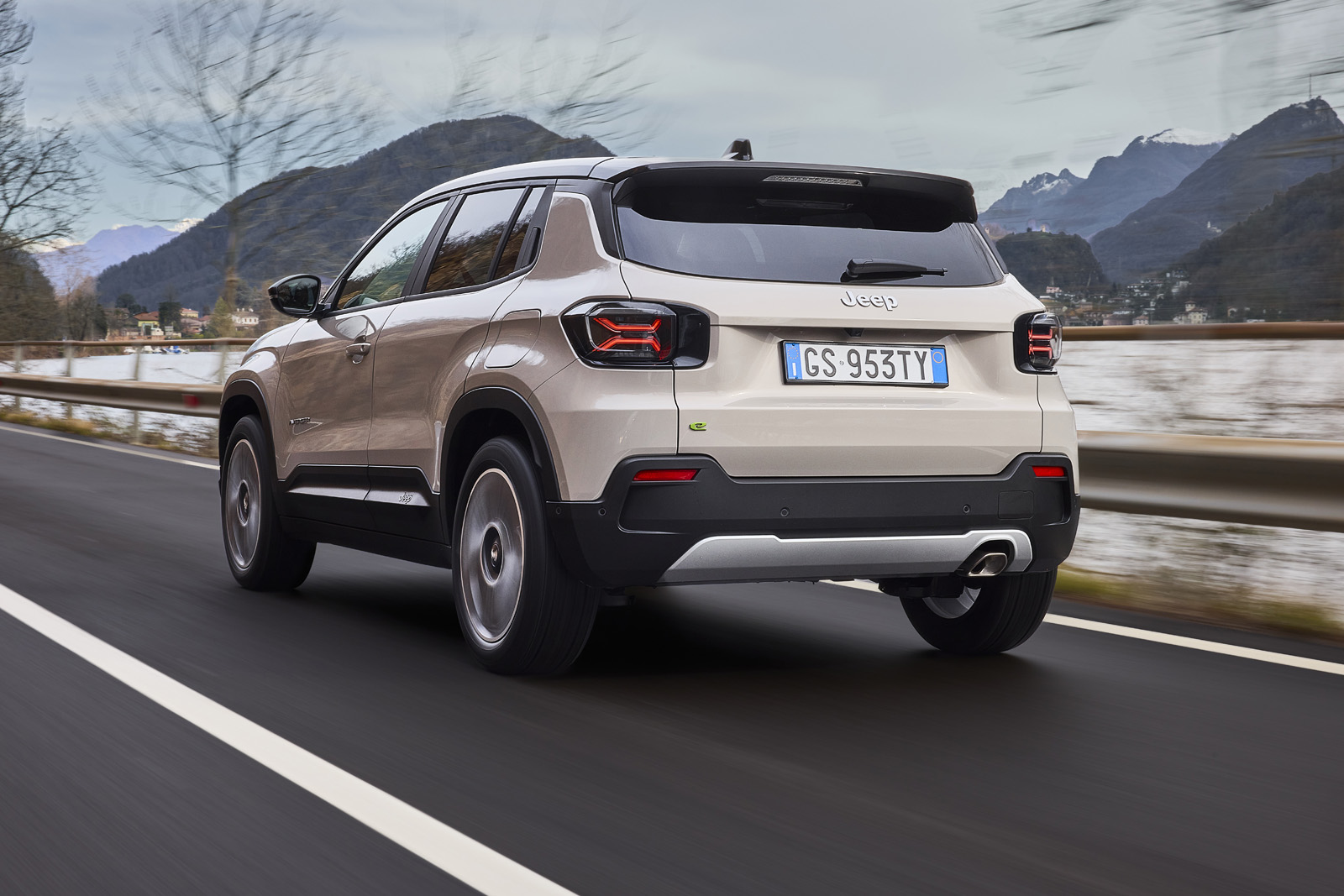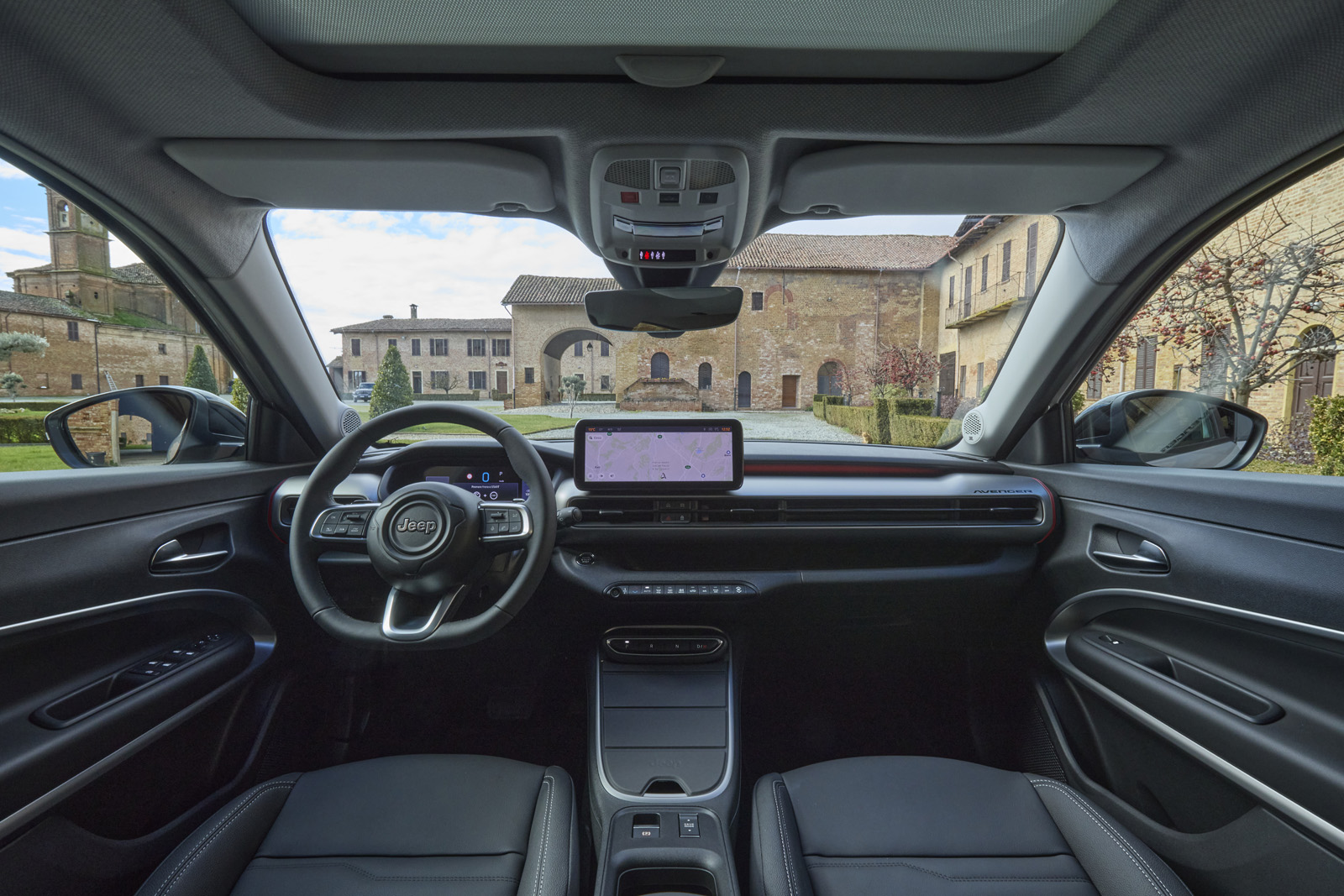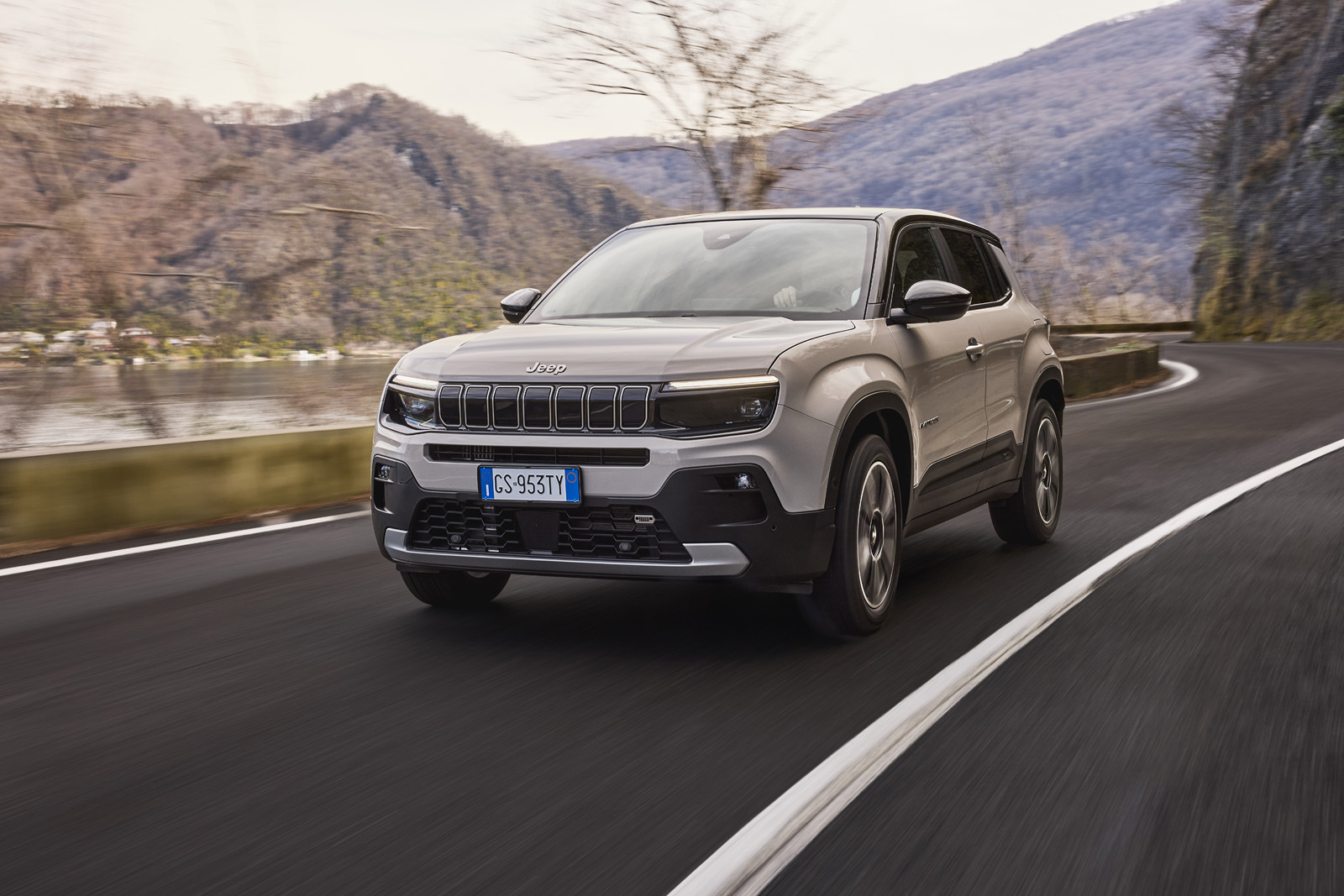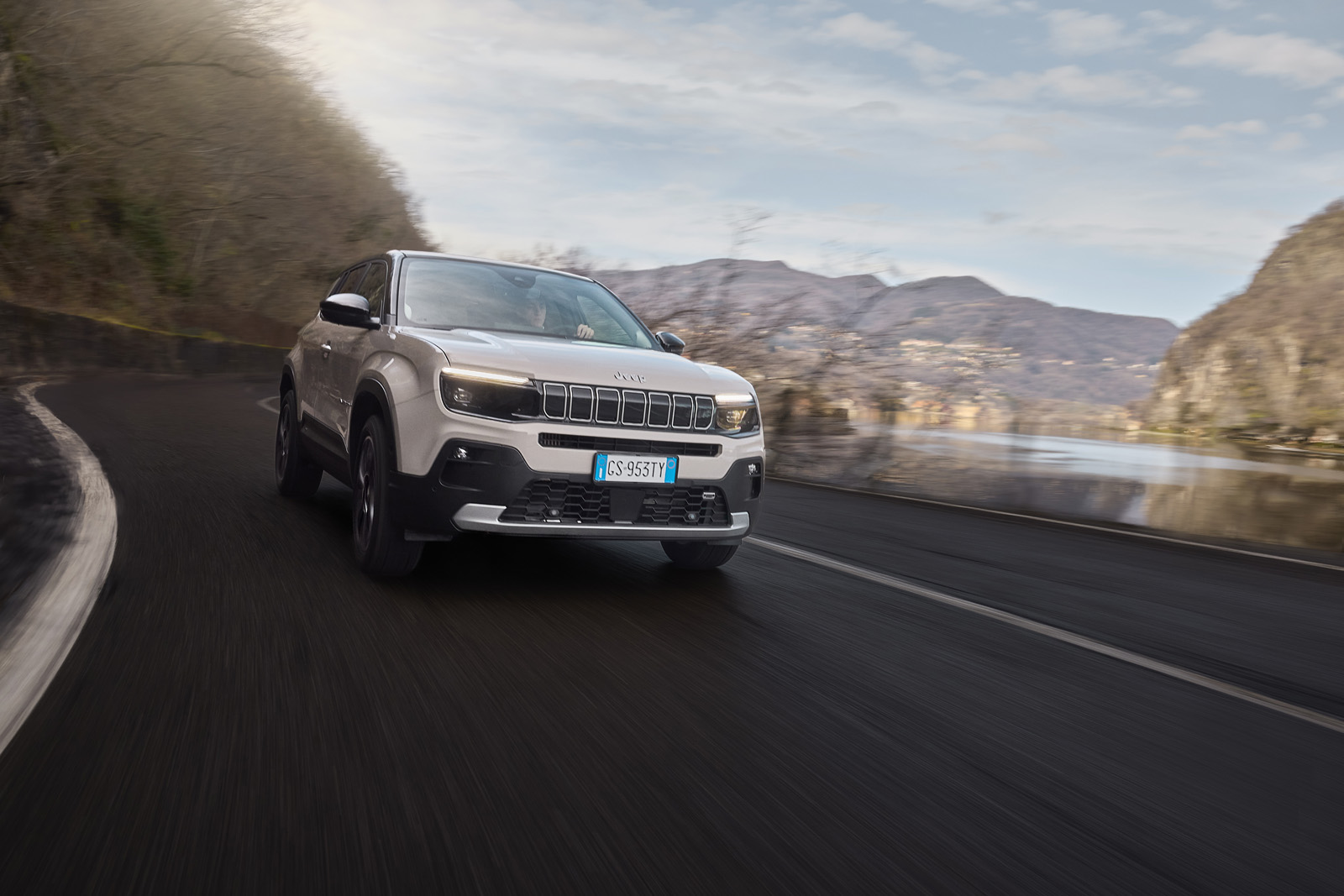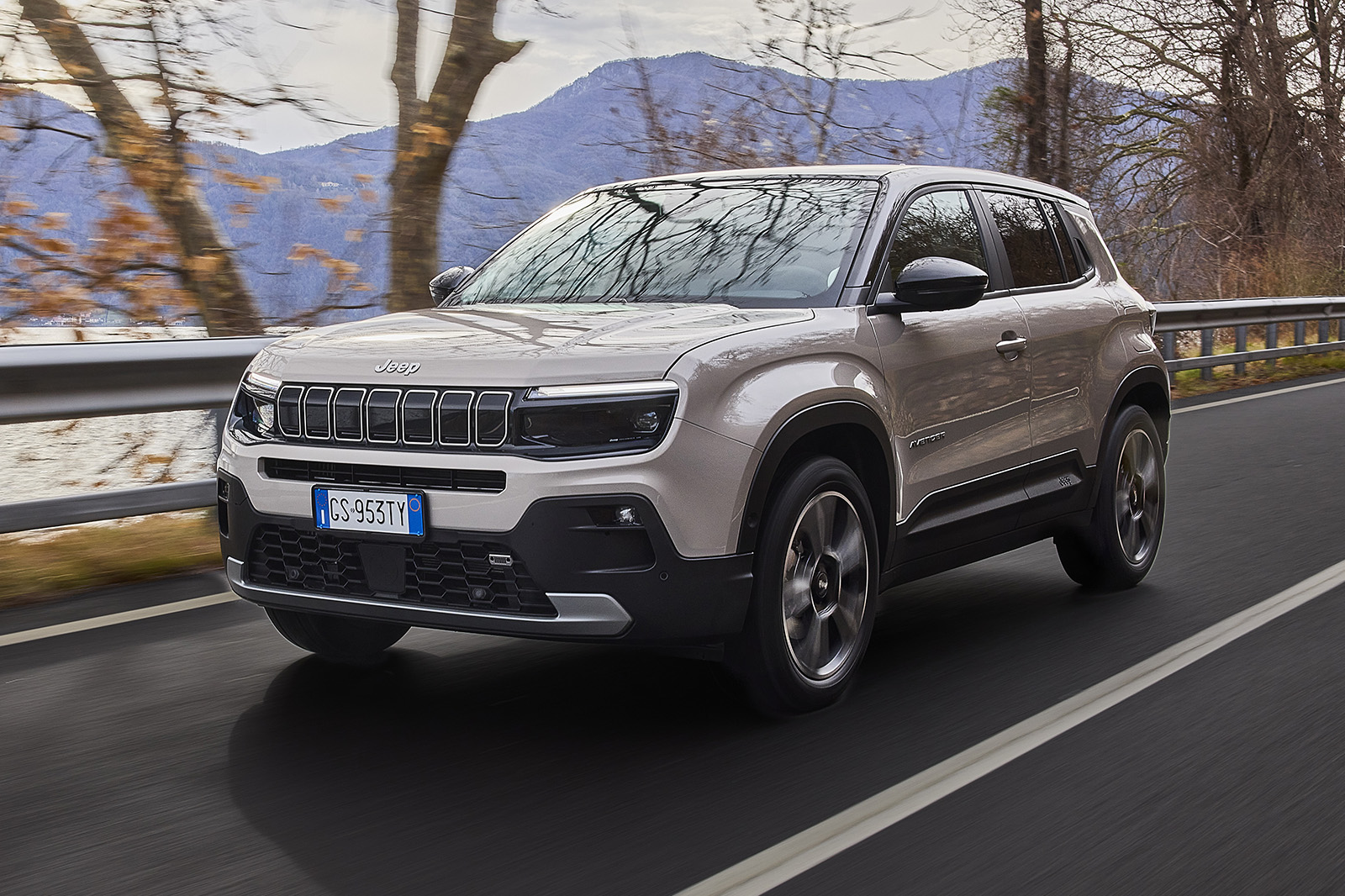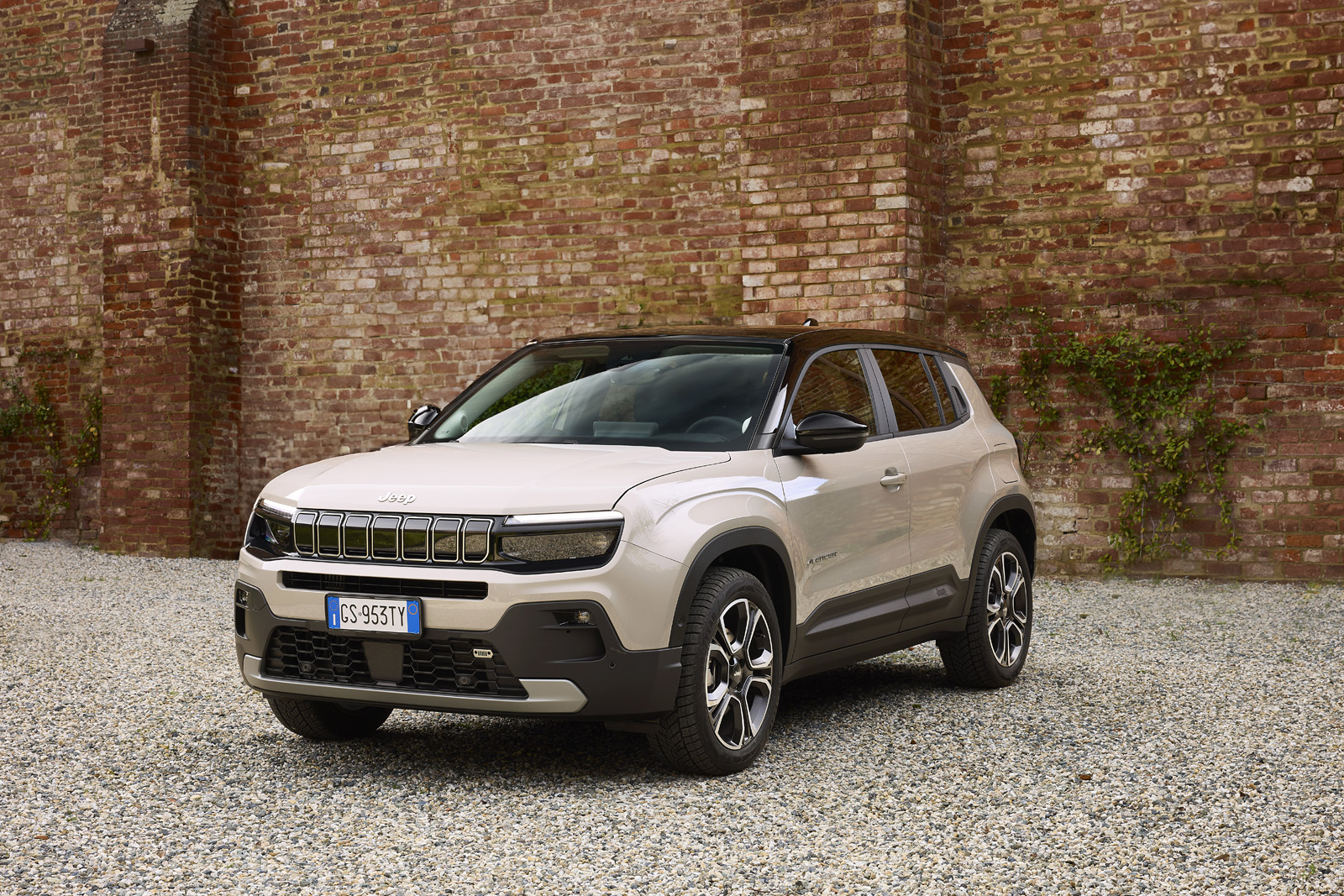The e-Hybrid’s engine appears rather measly on paper, and with a 0-62mph sprint of 10.9sec, it won’t be winning any sprint races. But it's torquey off the line, bolstered by an E-Boost feature that adds 40lb ft of torque for an extra push in acceleration.
It also feels gutsier than the figures suggest in the mid-range. Indeed, Jeep says the e-Hybrid offers 30% faster acceleration between 30-60mph than the manual petrol Avenger.
You can feel the difference on faster B-roads and motorways. However, the gearbox can disappoint, because it doesn't always shift up or down when you need it to.
The set-up can sound quite gruff when you put your foot down too, in marked contrast to the near-slient serenity offered by the Avenger Electric.
The e-Hybrid can drive for up to 1km (0.6 miles) on electric power alone, which is more than most mild hybrids but a long way short of a good full hybrid system like Toyota’s.
Still, it comes in useful when you're manoeuvring or driving around town, and it’s here where the e-Hybrid excels, offering a refined and quiet driving experience when taking off from a set of lights or trundling through traffic.
If you're considering getting an Avenger Electric primarily for use in town, the cheaper e-Hybrid would make a suitable alternative.
We've yet to sample the manual petrol, but this review will be updated as soon as we get our hands on one.





